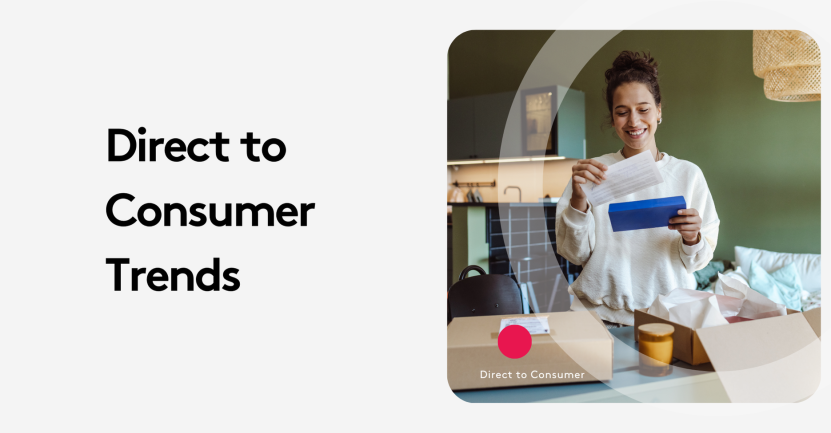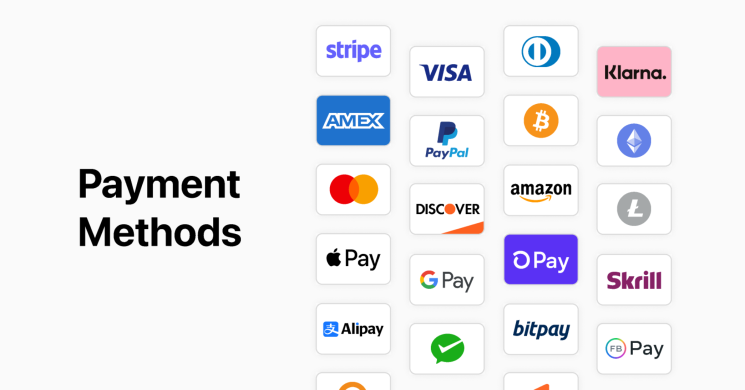The Truth About D2C Trends: Hype vs. Reality in 2025

Not all D2C trends are game-changers—some are just hype. As brands navigate this evolving space, separating fact from fiction is crucial for long-term success.
Brands are embracing direct to consumer channels and consumers are here for it. With more than 80% of consumers planning to make at least one purchase from a D2C brand within the next five years, it is essential for brands to perfect their buyers' journey.
Buyers and consumers are increasingly looking for authenticity, transparency and personalized experiences.
Shopping directly from brands gives them the ability to engage directly with the companies behind the products. They get to research the brand and understand their values align and if the brand offers an experience worth their time and money.
In 2025, just offering a product is not enough, It's all about experience, emotional connection and smart fulfillment.
In this article we will explore the 10 direct to consumer trends that will define the future of direct to consumer shopping.
Key takeaways
- Personalized and Engaging Experiences – Consumers expect hyper-personalization, emotional connections, and unique retail experiences ("retailtainment") from DTC brands.
- Advanced Fulfillment and Automation – Faster deliveries through automation, robotics, and micro-fulfillment centers (MFCs) are becoming standard to meet consumer demand.
- Social Commerce and Flexible Payments – Social media platforms like TikTok are driving sales, while "Buy Now, Pay Later" options boost conversions and accessibility.
- AI and Predictive Commerce – AI is revolutionizing DTC with predictive analytics, smart warehouses, personalized marketing, and 24/7 automated customer service.
On this page:
Direct to consumer trend #1 - Hyper-Personalization
By now, you probably have read this in every blog about marketing trends. It's not over done, it is just the truth.
Marketers have access to many tools to help them personalized experiences for their visitors both online and offline. When selling directly to consumers it is important to put emphasis on their shopping experience and interaction with the brands.
Generative AI is a gold mine for personalization. With AI powered platforms such as Klaviyo or Bloomreach, brands can personalized experiences at every stage of buyers shopping journey.
DTC companies also have access to first degree data. This is valuable information that can should be leverage to offer bespoke products, experiences and customer service.
This personalization enhances customer loyalty, drives repeat purchases, and builds brand trust by catering to individual consumer preferences.
Direct to consumer trend #2 - Retailtainment
The competition for consumers' attention is fierce and brands are doubling down on creativity to stand out.
From Cartier café in Dubai to Build Your Own Box by Birchbox, retail experiences are everywhere.
This is the proof that retail is not dead, traditional retail is. As DTC brand, you want to cut through the noise by offering unique and creative retail and online experiences. Think instagramable, unique and engaging.

The goal of Retailtainement is to connect with the audience on a different level to create an emotional and positive association. Create experiences that enhance your product and conoey your values and vision.
Direct to consumer trend #3 - Customer Service
Every brand will make mistakes but a great way to stand out is customer service.
In 2025, consumers expect immediate engagement and access to instant communication on channels
D2C brands will focus on improving customer service through instant communication channels, responding to the need for quick, personalized support.
Also never forget that consumers are smart and do their research before committing and purchasing a product. With 93% of consumers reading product reviews before making purchase decisions, you can not ignore your customer service.
For digital native brands, implement and easy-return policy to help build trust and eliminate a barrier to entry for the consumer.
can often provide a higher level of customer service, including personalized support, easier returns, and quicker resolution of issues. This can significantly enhance consumer satisfaction and loyalty.
Be the brand that cares. It will be noticed.
Direct to consumer trend #4 - Subscription models
Subscription-based DTC models are thriving as they offer convenience for the customer and predictable revenue for the brands. It's a win-win situation.
This model help DTC companies plan their financials and manage their inventory. It fosters long-term customer relationships by encouraging repeat business and offering personalization options, enhancing customer loyalty and lifetime value.
As consumer preferences lean towards convenience and curated experiences, subscription models are poised for continued growth across various sectors.
Birchbox and Blue Apron are the perfect success stories for subscription based models. Today even Amazon is offering subscription options for almost anything you purchase.

If you are considering subscription model, your eCommerce platform should supports recurring payments and offer seamless integration with your fulfillment centers.
Direct to consumer trend #5 - Automation and Robotics in Fulfillment
No one can escape automation and even more so when it comes to fulfillement. Consumers are demanding fast delivery options and same-day or next-day services are becoming the norm.
Sephora, Neiman Marcus and other retailers integrated these fast delivery options into their customers' journey using it as a competitive advantage.
If DTC companies want to cater to the "I want it know" customer, they need to choose fulfillment centers that integrate robotics and AI.
Automation through robotics in warehouses and fulfillment centers dramatically speeds up the process from order to shipping. This is crucial for D2C brands that promise quick delivery times.
The feed fulfillment center is a great example of an efficient and fully automated warehouse run by BrightPick AI robots.
Automated systems not only reduce labor costs but they also minimize errors and returns. It also makes it easier for D2C companies to scale operations without increase in labor costs. This scalability is vital for D2C brands that might experience viral moments or seasonal spikes.
With an automated fulfillment process, D2C brands can offer more reliable shipping estimates and increase customer satisfaction.
Direct to consumer trend #6 - Micro-fulfillment centers (MFCs)
Micro-fulfillment centers (MFCs) are small, highly automated warehouses located in urban or high-demand areas.
They typically 3,000 to 10,000 square feet and can hold up to 15,000 different items.
These centers allow DTC brands reduce delivery times and costs while also minimizing environmental impact.
MFCs should be an integral part of modern D2C logistics strategies as they offer scalability, flexibility in inventory management and best cost management.
Direct to consumer trend #7 - social commerce
With platforms like TikTok Shop experiencing explosive growth; it represents 66% of all social sales; integrating social media channels into your selling strategy is a must.
Social commerce offers a seamless shopping experience allowing users to make purchases in the app they are already engaged in. The customer journey happens fully on the social channel, from discovery to purchase.
Trends like #TikTokMadeMeBuyIt highlight how social media can turn products into viral sensations overnight. This is particularly important for DTC brands that are launching their products.

To dominate social channels, setting up a social media strategy that emphasis working with the right influencers and being creative is key to becoming viral.
It's no longer about the number of followers but more about the engagement and authenticity. Micro and nano influencers are increasingly popular with brands as they offer a more active community built on trust.
Algorithmic product discovery is also a big advantage of social platforms as they can recommend product based on user behavior and interest. These recommendations are often hyper-personalized yielding better conversion rates.
Direct to consumer trend #8 - Headless technology for Omnichannel delivery
With customers shopping across multiple platforms, an omnichannel approach is necessary from discovery to fulfillment.
Headless commerce platforms offer the flexibility to build integrated shopping experiences across all channels. With one single content back-end that delivers content to different channels front-ends via API.
A headless approach allows DTC brands to be experimental with their online experiences. They give them the flexibility to updates the user experiences without a complete platform overhaul.
D2C brands are also blending digital and physical touchpoints to provide experiences spaces to interact with the brands. This enhances accessibility and customer touchpoints.
Direct to consumer trend #9 - Flexible Payment Options
Klarna, Afterpay, Affirm, all these payment options has won the checkout of brands and the pocket of consumers. They have popularized the Buy now, Pay later beyond credit card and made it accessible to the mass.
This shift has boosted conversion rates for eCommerce by reducing the psychological barrier of large upfront costs.
For D2C brands, embracing multiple and flexible payment options means reducing abandoned carts and ensuring immediate revenue.

The introduction of these new online payment options have influenced consumer behavior by encouraging purchases that might have been previously considered too costly.
Opening a larger market for brand selling high ticket items that may have been considered out of budget for a certain target group.
As these services expand globally, D2C brands have the opportunity to tap into new markets, but they must also navigate the complexities of consumer finance responsibly to maintain trust and loyalty.
Direct to consumer trend #10 - AI and Predictive Commerce
Artificial Intelligence is a revolution and transforming every business and direct to consumer ecommerce will see its impact to.
AI's integration into commerce will span from predictive recommendations to smart warehouse solutions. The benefits impact the entire customer journey, optimizing costs and elevating customer experiences.
By analyzing vast amounts of data, AI is able to predict future purchases, optimize inventory, personalize marketing, and even automate customer service. Buyers experiences are becoming seamless and highly tailored not only meeting but anticipating consumer expectations.
In Marketing, AI helps DTC brands create content faster, personalize at scale and implement predictive recommendations.
In logistics and fulfillment, AI introduces smart warehouse solutions like autonomous robots for picking and packing, predictive inventory management and optimized routing for last-mile delivery.
In Customer relations, AI-powered chatbots and virtual assistants are transforming customer service by providing instant, 24/7 support.
In short, AI will help optimize the entire customer journey. From the moment a consumer interacts with a brand, through discovery, purchase, delivery, to post-purchase engagement.
Conclusion
The direct to consumer landscape is evolving with the rest of the industries. Embracing personalization, AI and efficiency to offer better experiences to buyers across all channels.
DTC brands are not just selling products anymore, they are crafting experiences that resonate on a personal and emotional level.
The future of direct to consumer shopping will lie in creating seamless, authentic, and value-driven interactions.




